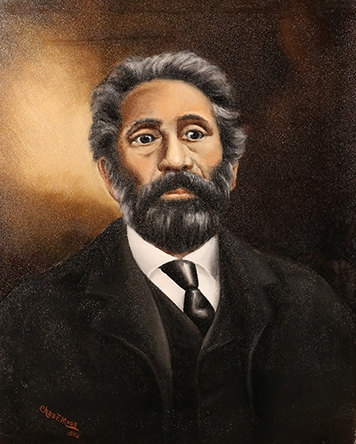
The MSV celebrates a pioneering Valley artist, Charles Franklin Moss (1878-1961). Explore the life and works of an artist born in Winchester, VA whose technique was regarded by art critics as “being identical to that of the old masters.”
Many times, when writing an exhibition label, you don’t get the opportunity to share all of the information you would like. Instead, you try and boil down the key points that mark the importance of the object, whether it be artistic, historical, or a combination of both. Such was the case with one of the MSV’s most recent gifts: Portrait of Alexander W. Davis (1837-1920), 1902. Davis’ portrait was the work of his brother-in-law Charles Franklin Moss (1878-1961), a pioneering but little-known African American artist born in Winchester.
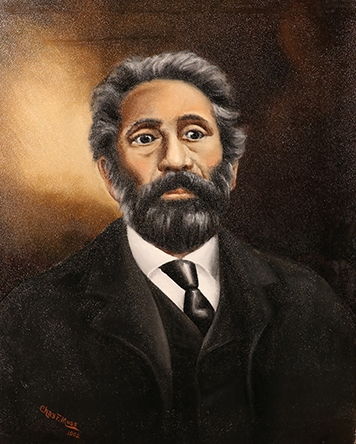
Fig 1. Portrait of Alexander Davis (1837-1920) by Charles Franklin Moss (American, 1878-1961), 1902, Winchester, VA. Signed (bottom left-hand corner): “Chas F. Moss / 1902”. Oil on artist’s board. Collection of the Museum of the Shenandoah Valley, 2015.04, given by Alexander and Bonnie Finley in honor of Jennie James Davis. Photograph by Scott Nolley, Fine Art Conservation of Virginia, Richmond, VA.
In addition to the portrait, the donors—Davis’ great-grandson Alexander Finley and his wife Bonnie—allowed MSV staff to copy dozens of family photographs pertaining to the artist and his family. To conclude Black History Month at the MSV and with this wealth of information at our fingertips, I would like to explore a little of the life and works of this important Valley artist.
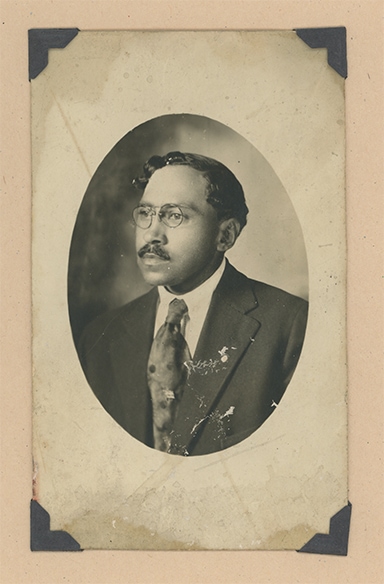
Fig 2. Charles Franklin Moss (1878-1961), early 1900s. Courtesy Alexander and Bonnie Finley.
Moss was born as Reconstruction ended in the Valley, but his story really begins a generation earlier with his mother Mary E. Johnson Ligans Moss (1840-1926). She was born enslaved in the household of Abram (1777-1842) and Rebecca Schultz (1798-1855) Miller, whose portraits are also in the MSV collection.
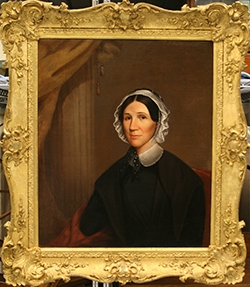
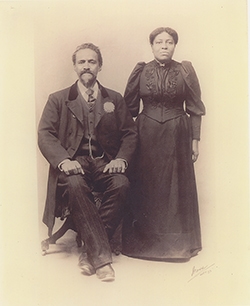
Fig 3. Portrait of Rebecca Schultz Miller (1798-1855), artist unknown, about 1855, Winchester, VA. Oil on canvas. Collection of the Museum of the Shenandoah Valley, 2005.0011.2, gift of Christine M. Leahy.
Fig 4. Thomas Winifred Moss (1835-1914) and Mary E. Johnson Ligans Moss (1840-1926), early 1900s. Courtesy Alexander and Bonnie Finley.
Trained as a cook, Mary received her freedom when she turned twenty-one years old, according to the will of Rebecca Miller. Mary chose to remain with the Miller family after her manumission. She worked first for Dr. William Schultz Miller (d. 1907) and later for his daughter Katherine “Katie” Miller, both of 209 Fairmont Avenue. According to family tradition, Mary Johnson and Katie Miller were close friends for most of their lives. The Moss and Miller families celebrated holidays, birthdays, and other important life events together in the decades after the Civil War. The Moss-Miller relationship is an important example of blurred racial lines in a Valley community still coming to terms with the war’s consequences.
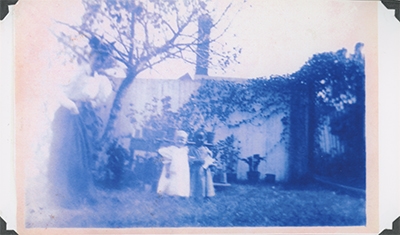
Fig. 5 Unidentified girls probably from the Moss and Miller families. Possibly taken at the Miller family home on Fairmont Avenue, early 1900s. The woman on the far-left could be Katie Miller. Courtesy Alexander and Bonnie Finley.
Artist Charles Franklin Moss was born into these unique circumstances in 1878. His mother Mary had married Thomas Winifred Moss (1835-1914) the year before. Very little is known about young Charles’ early exposure to art. According to the 1900 census—at only twenty-two years old—Moss was already considered an “Artist.” Some of Moss’ earliest known portraits were of his family, including the MSV’s portrait of Alexander Davis, his sister Etta’s husband. Probably born enslaved in Warren County in 1837, Davis was a prominent community member in his own right. Known locally as “Uncle Aleck,” he served on Winchester’s Common Council (today’s City Council) and helped the community recover from its Civil War wounds. The same year, Moss also signed and dated a portrait of his father, which is currently unlocated but known through a photograph.
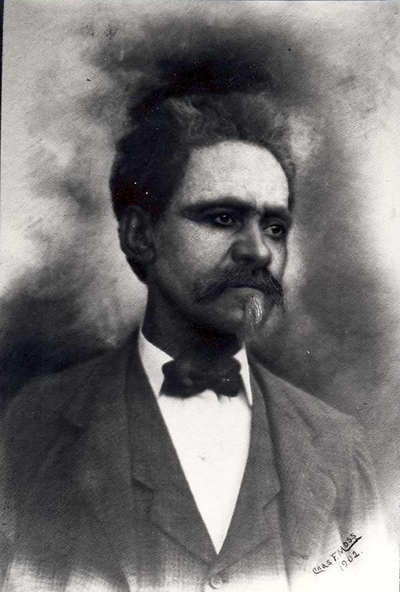
Fig 6. Portrait of Thomas Winifred Moss (1835-1914) by Charles Franklin Moss (American, 1878-1961), 1902, Winchester, VA. Signed (bottom right-hand corner): “Chas F. Moss / 1902.”. Courtesy Stewart Bell Jr. Archives, Handley Regional Library, Winchester, VA, Henry Moss Brooks Collection, 599-30 thl.
Within a few years of the 1900 census, Moss entered an apprenticeship in photographic art in Providence and/or Newport, Rhode Island. Numerous photographs survive bearing the imprint of the Moss Studio founded in 1908 or 1909 in Carlisle, Pennsylvania.
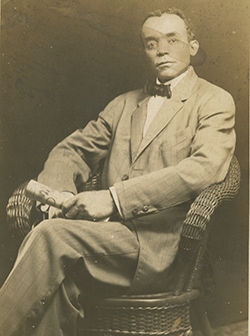
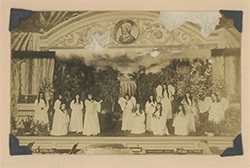
Fig 7. Photograph of an unidentified man in the Moss Studio, early 1900s, Carlisle, PA. Imprinted: “MOSS STUDIO / CARLISLE, PA”. Courtesy Alexander and Bonnie Finley.
Fig 8. Photograph of a play entitled “The Ten Virgins”, about 1916, probably Carlisle, PA. Inscribed (along bottom): “The Ten Virgins” and “COPYRIGHT 1916 / MOSS STUDIO.” Courtesy Alexander and Bonnie Finley.
Moss’ proficiency in photography led him to be the first African American admitted to the National Association of Professional Photographers in 1914. This was the first of several groundbreaking achievements during his lifetime. Many of the photographs documented by the MSV include Moss’s wife Sarah Virginia Townsle (1880-1970) and their growing family.
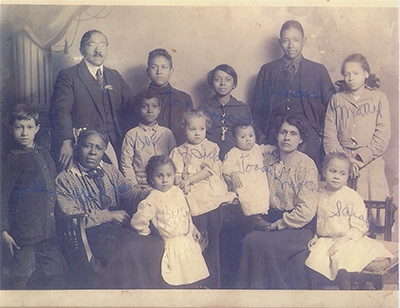
Fig 9. Photograph of Charles Franklin Moss and family, about 1917, location unknown. Courtesy Alexander and Bonnie Finley. Charles’ mother Mary J. L. Moss is seated in the left foreground. His wife Sarah Virginia Townsle is on the right.
Moss did not stop at photography. Sometime after 1909, he studied sculpture under a private tutor at the Cooper-Union School of Fine Arts in New York. He was also one of the first African Americans admitted to the Pennsylvania Academy of Fine Arts in Philadelphia. While at PAFA, Moss likely encountered the work of another pioneering African American artist: Henry Ossawa Tanner (1859-1891). The son of a bishop in the African Methodist Episcopal Church, Tanner’s tendency towards biblical themes and depictions of the Middle East are also apparent in Moss’ painted works. A 1930 painting by Moss of a Bedouin encampment—depicting Arabic nomads—is perhaps the artist’s best homage to Tanner.
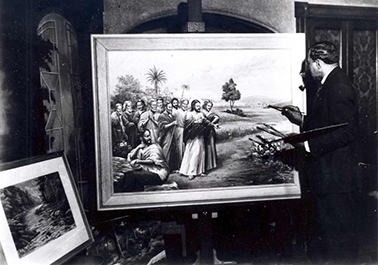
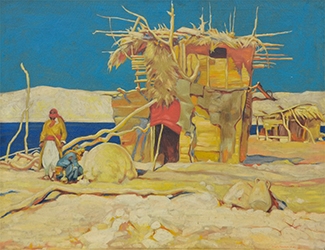
Fig 10. Charles Franklin Moss painting a biblical scene in his Pittsburgh studio, probably 1930s. Courtesy Stewart Bell Jr. Archives, Handley Regional Library, Winchester, VA, Henry Moss Brooks Collection, 599-38 thl.
Fig 11. Bedouin Encampment with Huts by Charles Franklin Moss (American, 1878-1961), 1930. Signed (bottom right-hand corner): “Charles Franklin Moss / 30”. Oil on canvas. Image Burchard Galleries Estate Antiques & Fine Art Auctioneers, St. Petersburg, FL.
It also may not be a coincidence that Moss established his painting studio in Tanner’s hometown of Pittsburgh by the 1930s, at 2525 Centre Avenue. Moss continued to win accolades from this location for the rest of his life. One local Pittsburgh paper claimed that his “technique is regarded by art critics as being identical to that of the old masters.”
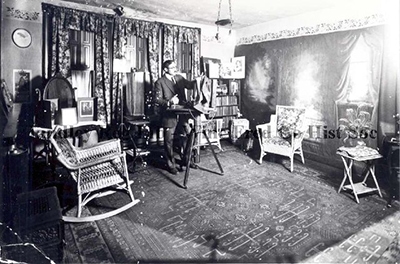
Fig 12. Charles Franklin Moss in his Pittsburgh studio, probably 1930s. Courtesy Stewart Bell Jr. Archives, Handley Regional Library, Winchester, VA, Henry Moss Brooks Collection, acc. no. 599-39 thl.
Despite Moss’ success in Pennsylvania, he nevertheless returned to Winchester occasionally to visit family, take their photographs, and paint their portraits. Moss died during one of these return trips at the home of Mrs. Hattie Q. Giles, whom he was visiting in 1961. He was eighty-three years old. His grave is in Orrick Cemetery on South Braddock Street in Winchester. Much more remains to be discovered about this considerable artist and his work. In the meantime, I hope you find the chance to visit Alexander Davis’ recently-conserved portrait on view in the second-floor galleries at the MSV.